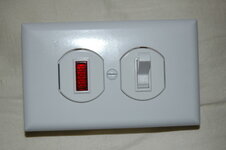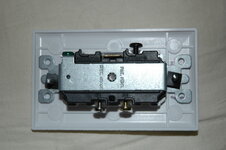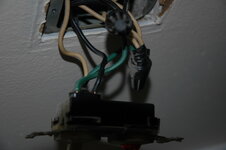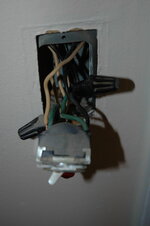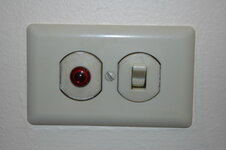opfoto
Member
Just trying to score points with SWMBO.... 
We have an switched indicator light to the attic. Wanted to switch it out for a color change....almond to white.
The box has 4 wires...
on one side white wire and green wire going into the back of old switch in one hole....
on the other side black wire going into one hole on top then green wire going to the other hole on bottom.....
NO screws!
New switch is a Levitron:
4 screws including the green ground screw.
On 1 side a black screw.....on the back it is labeled common.
On the other side a brass screw..... then a silver screw under it...
Here is my take on it....
I am assuming the green is commom....so I think Black wire goes to brass screw....The green wire from the same side goes to the silver screw.
Then twist the white wire to the other green wire with another wire and put it on the black screw.
The box is not grounded there is no "normal ground wire" (There are no bare copper wires in the box)
Can someone help me decipher this and I will send you any extra points I score that I won't be using anytime soon :wink:
Thanks everyone....
We have an switched indicator light to the attic. Wanted to switch it out for a color change....almond to white.
The box has 4 wires...
on one side white wire and green wire going into the back of old switch in one hole....
on the other side black wire going into one hole on top then green wire going to the other hole on bottom.....
NO screws!
New switch is a Levitron:
4 screws including the green ground screw.
On 1 side a black screw.....on the back it is labeled common.
On the other side a brass screw..... then a silver screw under it...
Here is my take on it....
I am assuming the green is commom....so I think Black wire goes to brass screw....The green wire from the same side goes to the silver screw.
Then twist the white wire to the other green wire with another wire and put it on the black screw.
The box is not grounded there is no "normal ground wire" (There are no bare copper wires in the box)
Can someone help me decipher this and I will send you any extra points I score that I won't be using anytime soon :wink:
Thanks everyone....

